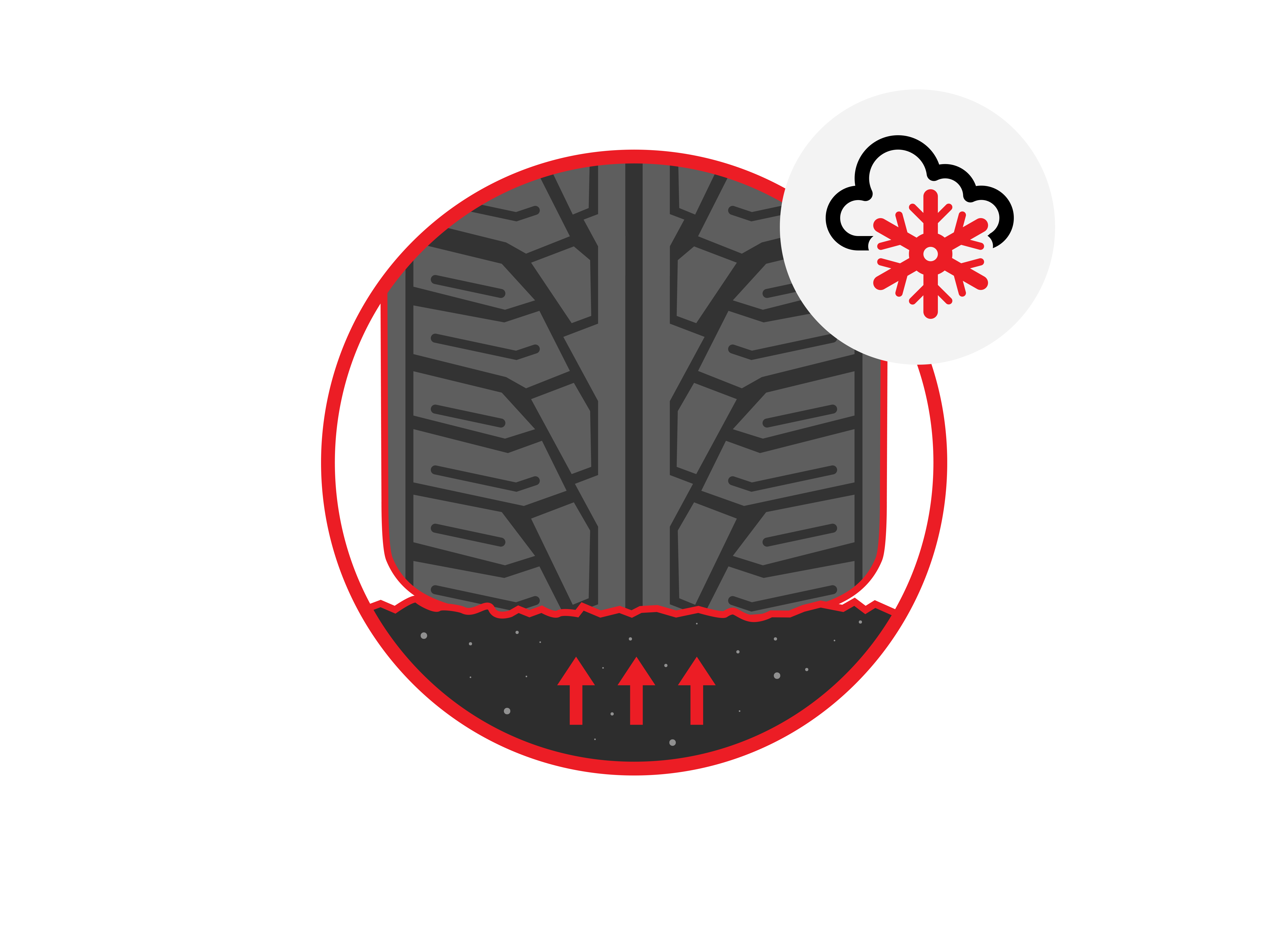
How to change a tyre?
Here's what you need to know
We would always recommend getting your tyre changed by a professional Uniroyal dealer but, if you’re determined to change a tyre yourself, it’s important you know how do it safely.
Before you begin
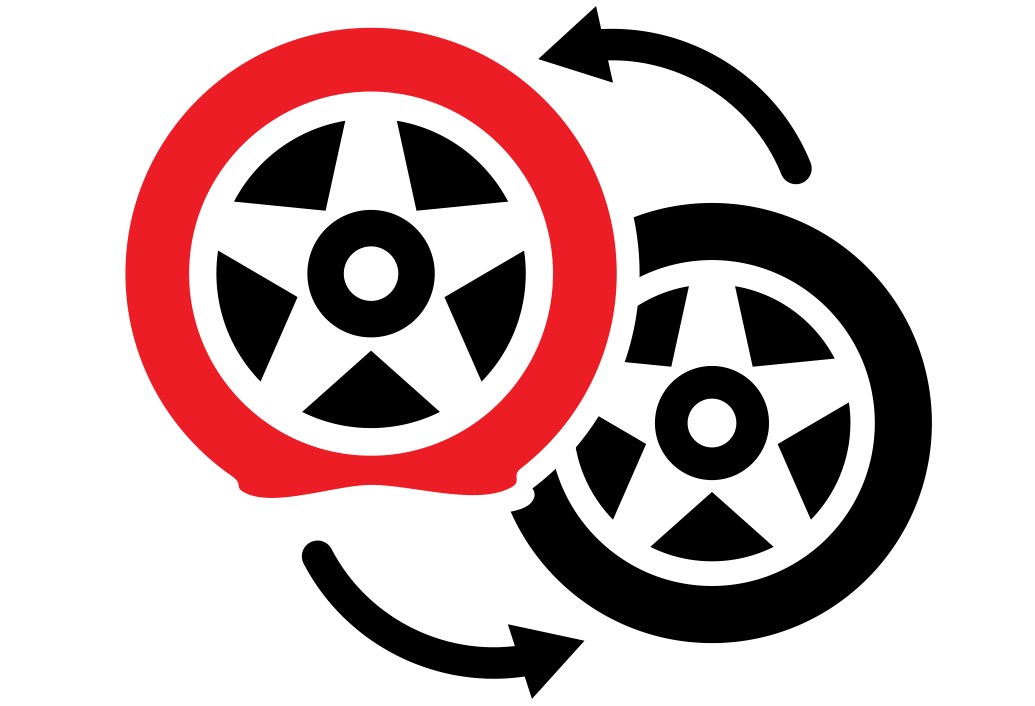
Firstly, make sure you’re in a safe, flat area away from passing traffic. If you have a blow out on the motorway it is far safer to call for roadside assistance than attempt to change a tyre yourself.
Assuming you’re in a safe area, check the equipment you have and what your options are. For example, does your car have a full-size spare wheel, a skinny temporary spare or did it come with a puncture repair kit? Does the spare have adequate tread and is it fully inflated?
A full-size spare wheel
Before you even start to change a tyre, read your vehicle’s handbook. It will detail any peculiarities about your make and model, list the tools they’ve supplied and show you where to attach the jack. This final point is very important.
Ask your passengers to get out of the car, switch off the engine and turn on your hazard lights. Put your handbrake on and put the car into first gear (or P if it’s an automatic). To stop your car from rolling once it’s been jacked, put a chock under the wheel that’s diagonally opposite from the punctured one. If you don’t have a chock, a large rock or log should do the job.
Always refer to your manufacturer’s handbook for specific instructions.
There you will discover:
1. If you have a full-size spare tyre
2. If you have a temporary ‘skinny’ tyre
3. If you have a puncture repair kit
4. If you have locking wheel nuts.
5. Where exactly to position the jack.
6. Your tyre pressure requirements.
7. Whether to expect any warning lights post tyre change.
Get your spare ready and put it within arm’s reach. Remove your wheel trim, if you have one, to expose the wheel nuts. Place the jack in the area stated in your handbook, taking care to engage it fully. Then, use the jack to raise the car slightly, no further than when it starts to lift the vehicle off its springs.
Loosen the wheel nuts using your wheel wrench and, if necessary, your locking wheel-nut adapter. Then you can raise the car, using the jack, until it’s off the ground. Undo the nuts completely, leaving the top one until last. You may need to use your knee to support the wheel while you do this.
A temporary ‘skinny’ tyre
The process is the same for fitting a ‘skinny’ tyre but read your handbook carefully before you fit it as it may set some of your warning lights off. You’ll only be able to drive a short distance and at a restricted speed so it’s best to head straight for your nearest Uniroyal dealer.
A puncture repair kit
Follow the instructions on the packaging carefully as these may vary from one kit to another. Although these kits make it easier than changing a wheel, do bear in mind that they are a temporary solution and they won’t be able to deal with major blow outs. As with temporary ‘skinny’ tyres, you should get to your Uniroyal dealer as soon as possible to get your repair checked.
Do your tyres need replacing or repairing
Here's some useful tips
There are several reasons why you might need to change your tyres. Maybe it’s that time of year when you need to swap from winter tyres to summer tyres – or the other way round.
Maybe your tread depth has fallen below legal limits, you’ve had a puncture or your tyres have deteriorated in storage.
What you need to know is whether your tyres need replacing or repairing.
In the case of swapping tyres, that’s easy. Ask your local Uniroyal dealer to check for any issues before they change your tyres over. It may be that your tread depth is still fine, particularly if you have a relatively low annual mileage, but your tyres may have become spongy through lack of use. If they’re happy, it’s a simple case of switching one set of tyres for the other.
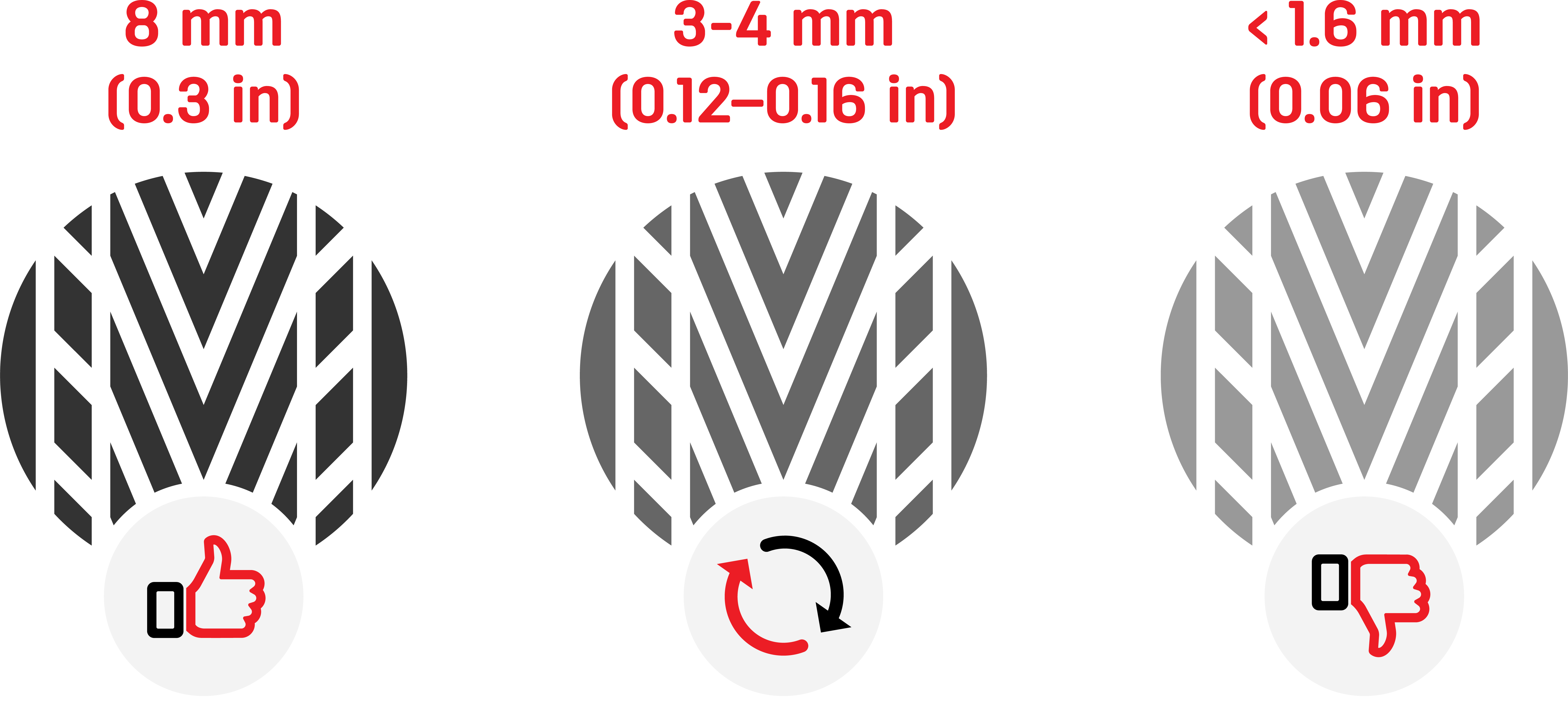
Your Uniroyal dealer will run through some mandatory checks to see if your tyres need replacing or repairing.
They will check:
1. Your reason for changing tyres
2. The quality of your replacement tyres (if kept in storage)
3. Your current tread depth
4. The location of any puncture
5. Any signs of run flat damage
With tread depth, it’s easy to tell if your tyres need replacing or repairing. It comes down to maths. In Europe, passenger vehicles, with fewer than eight seats, require a legal minimum depth of 1.6mm across 75% of the tyre’s width and 100% of the tyre’s circumference. This is also true of goods vehicles and light trailers not exceeding 3,500kg max gross weight.
Most vehicles that are larger, and motorbikes 50cc and over (with or without a sidecar) the legal minimum is 1.00mm and for mopeds and motorbikes under 50cc the original tread pattern must be visible.
In the USA, the minimum tyre tread depth is 3/32".
The correct profile depth. Safe in every season.
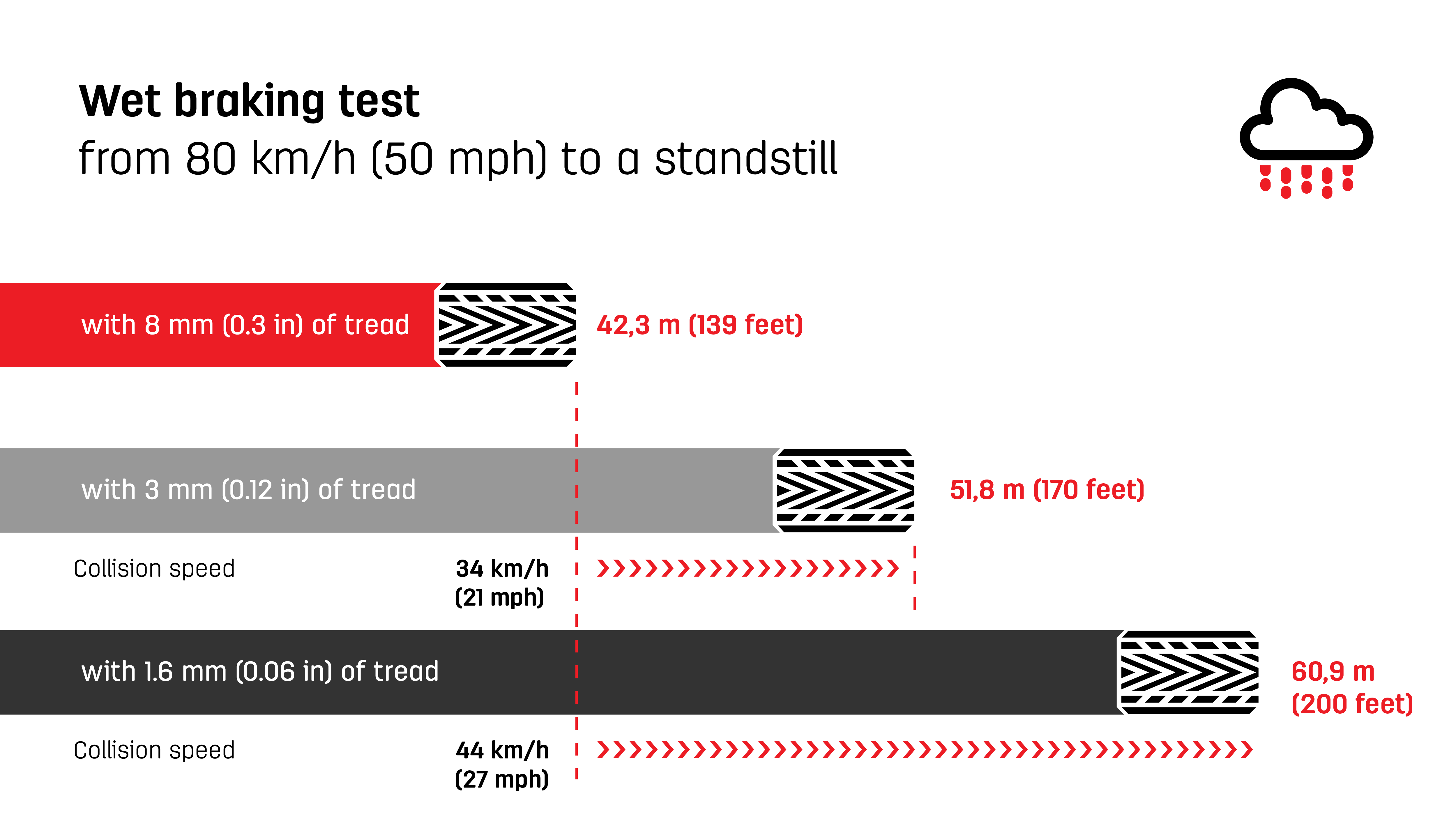 *Test conditions: 205/55 R 16 H, ContiPremiumContact™ 5, Passt (2.9/Audi A4, braking on wet, from 100km/h to 0 km/h (status: 2015). The graphics shown here are for illustration purposes only. The braking distance of a vehicle depends on its type, its age, the brakes and the tyres used, as well as the road surface. (Source: Continental Reifen Deutschland GmbH). Tyre pressure in relation to the vehicle manufacturer's recommendation (Source: Continental Reifen Deutschland GmbH).
*Test conditions: 205/55 R 16 H, ContiPremiumContact™ 5, Passt (2.9/Audi A4, braking on wet, from 100km/h to 0 km/h (status: 2015). The graphics shown here are for illustration purposes only. The braking distance of a vehicle depends on its type, its age, the brakes and the tyres used, as well as the road surface. (Source: Continental Reifen Deutschland GmbH). Tyre pressure in relation to the vehicle manufacturer's recommendation (Source: Continental Reifen Deutschland GmbH).
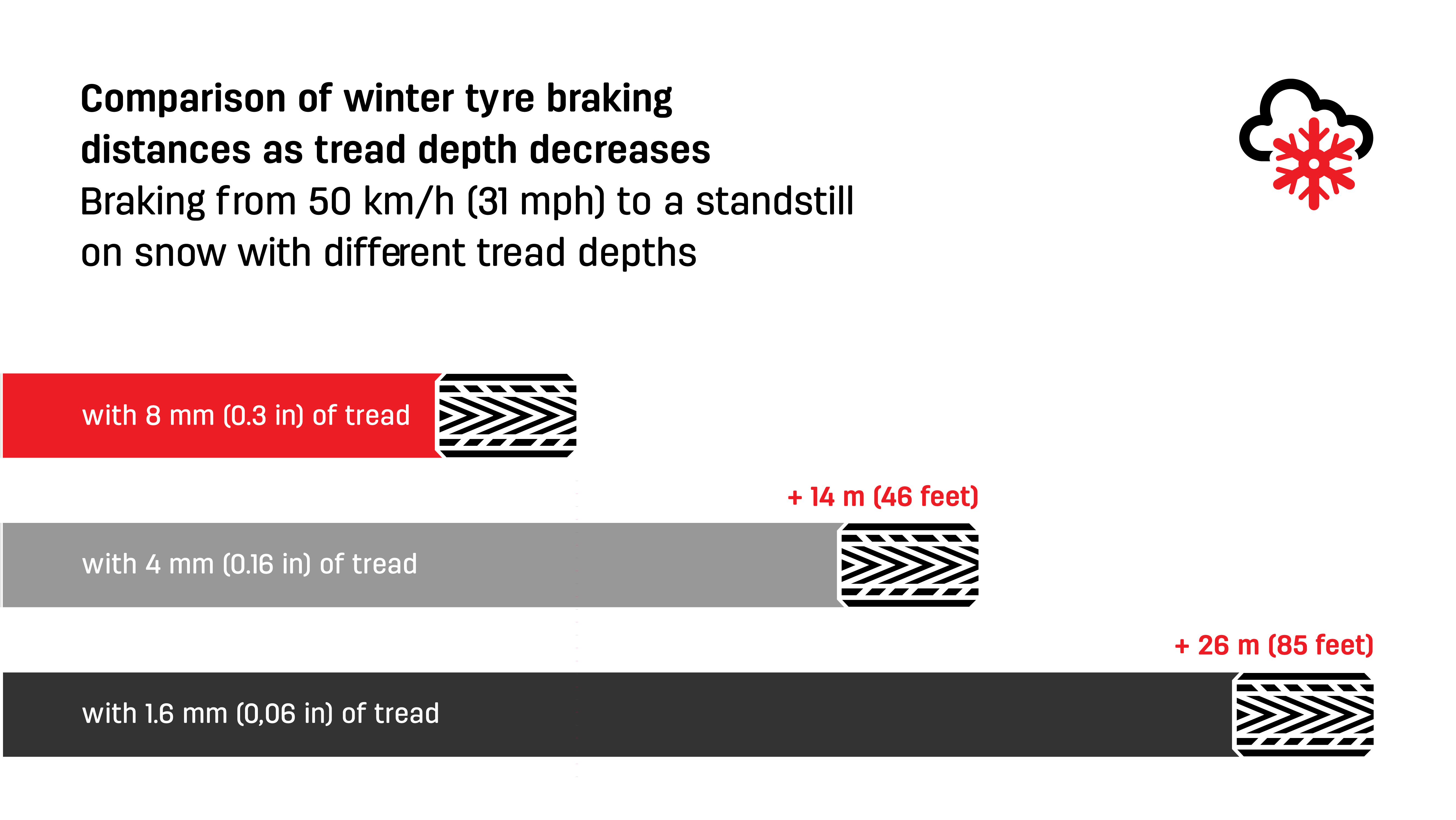 *Test conditions: 205/55 R16 91H, ContiWinterContact™ TS 830, VW Golf V, braking on snow, from 50km/h to 0 km/h (status: 2013). The graphics shown here are for illustration purposes only. The braking distance of a vehicle depends on its type, its age, the brakes and the tyres used, as well as the road surface. (Source: Continental Reifen Deutschland GmbH). Tyre pressure in relation to the vehicle manufacturer's recommendation (Source: Continental Reifen Deutschland GmbH).
*Test conditions: 205/55 R16 91H, ContiWinterContact™ TS 830, VW Golf V, braking on snow, from 50km/h to 0 km/h (status: 2013). The graphics shown here are for illustration purposes only. The braking distance of a vehicle depends on its type, its age, the brakes and the tyres used, as well as the road surface. (Source: Continental Reifen Deutschland GmbH). Tyre pressure in relation to the vehicle manufacturer's recommendation (Source: Continental Reifen Deutschland GmbH).
Finally, punctures. This is where it takes a professional eye to make the decision on whether your tyres need replacing or repairing. Only certain areas of the tyre can be repaired and this varies by tyre type and tyre size. As well as checking the location of the puncture, the fitter will check, among other things, your tread depth, any run flat damage, the ageing of your tyre and whether it has been repaired before.
How to measure tyre pressure
And where to find the correct pressure
For your safety, comfort and the longevity of your tyres, it’s important that you check your tyre pressures regularly. Both under- and over-inflated tyres can affect your driving and your fuel consumption.
Can tyres really lose pressure overnight?
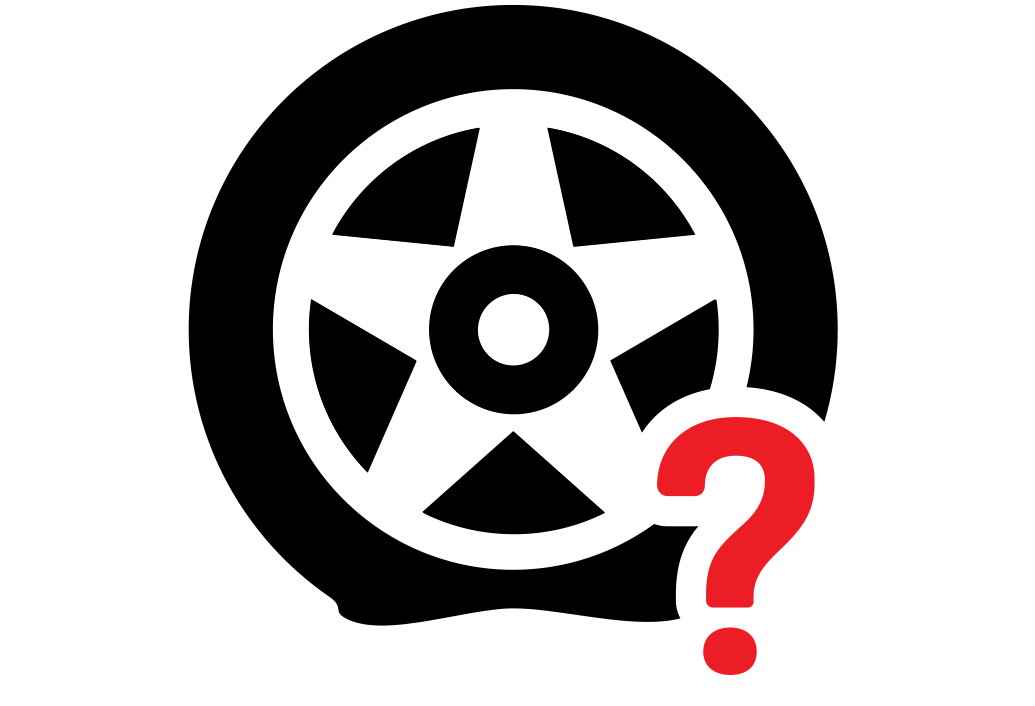
Yes. This is fairly common when there are big fluctuations between the daytime and nighttime temperatures. When the air in the tyres is hot, it expands and increases the pressure. When the air cools, and contracts, the pressure drops. The air can also expand when you drive at speed for an extended period of time.
What happens if my tyres are over- or under-inflated?
Your tyres are designed to give optimal contact with the road surface at a specific PSI (pound per square inch).
If your tyres are over-inflated you will have less rubber contact with the road and this will affect your safety and your mileage and performance. Your tyres will wear unevenly, making them dangerous for you to drive on.
If your tyres are under-inflated, they will increase your vehicle’s rolling resistance, increasing your fuel consumption. They will also reduce your vehicle control, make you more susceptible to punctures, increase your braking distance and increase your risk of skidding.
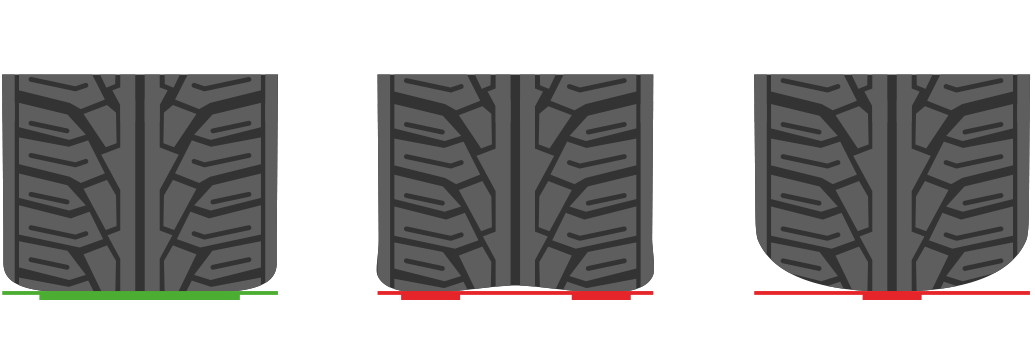 How over- and under-inflation affects grip
How over- and under-inflation affects grip
Where do I find my correct tyre pressure?
You will find your tyre’s correct pressure (measured in PSI or BAR pressure) in your manufacturer’s handbook. You should also find a sticker on the inside of the driver’s door. If neither are obvious, you can enter your car’s registration plate into an online search tool.
We recommend you check your tyre pressures every two weeks and before and after any long journeys. Some cars have a dashboard warning light which will notify you when your tyre pressures drop.
How do I check my tyre pressure?
It’s best to check your tyre pressures when your tyres are cold – either first thing in the morning or when the car has been stationary for at least two hours. However, if your tyre pressure warning light has come on, or you’ve noticed your tyre is low, it is more important to attend to it straight away.
You can buy gauges and pumps to use at home, or you’ll find high quality air gauges/pumps in nearly all petrol stations.
Tyre care made easy
How to keep using your tyres for as long as possible
Did you know that only an area of your tyres the size of a postcard comes into contact with the road? Every square centimetre of this contact surface helps to ensure that you can enjoy complete driving safety in wind and rain. That is why we recommend that you care for your car tyres on a regular basis. This can be done when you clean your rims, however, it involves regularly checking the tyre pressure, tread depth and the tyre conditions. We explain how often you should do certain things to ensure that you can use your tyres for as long as possible
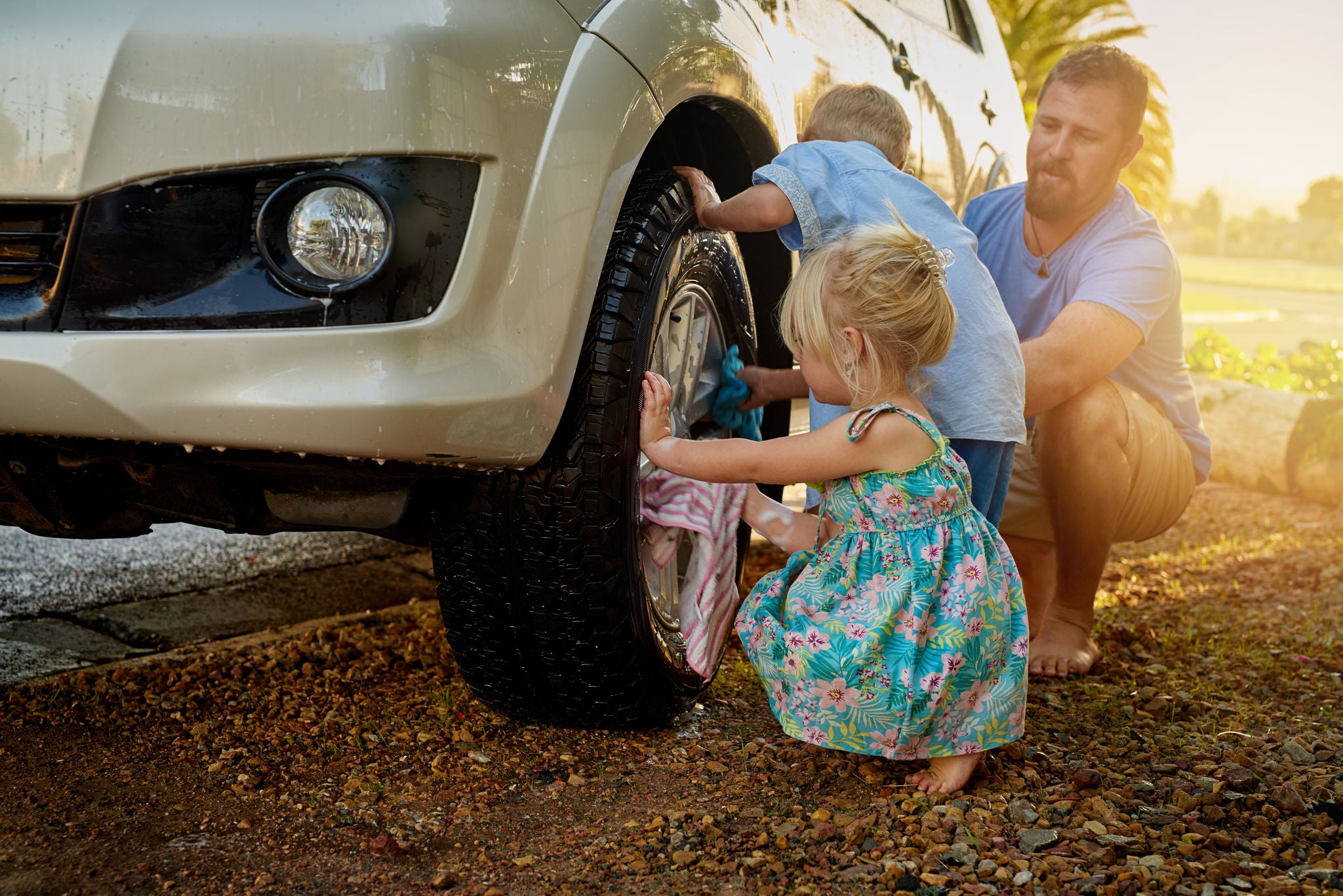
Our recommendations for your car tyre care
You should carry out certain checks so that you can use your tyres for as long as possible. Some of them have recommended intervals, for example because tyre pressure can decrease over time. Other checks are only needed where appropriate, for instance after an unwanted collision with the curb.
Regular
- Measurement of the tyre pressure every 14 days.
- Checking of the tread depth every 14 days, ideally before every long journey.
- Visual check for damage caused by sharp objects, cuts, cracks and bumps.
Seasonal
- Balancing the seasonal tyre change.
- Keeping track of the tyre age.
- Inspection of the valves and valve caps.
- Tyre cleaning and care.
As required
- Visual check for cracks, scratches and/or bumps after bumping the curb.
- Check for irregular wear and tracking after hitting a pothole.
Tips
- You don't need to note the exact age of your tyres. The reason being: You can use the DOT number (four-digit code) on the tyre to determine the tyre age, as well as the speed class. We explain how important the age and tread depth of your tyres are.
- Damaged rims are potential road traffic hazards. This damage can lead to hairline cracks which increase in size over time. Although rims can be repaired as necessary, it is only legally admissible to use rims with damage that is no deeper than 1 mm.
Part of car tyre care: Cleaning
Tyres and rims that are well cared for not only look better, they also last longer. This prevents your tyres from wearing out quickly. When you care for the rubber and clean the rims is up to you. However, you should care for your tyres before storing them at the very latest. Convenient: If the tyres are not mounted on your car, they are easier to clean and you protect the paint finish from dirt and small stones.
Do not use any heavy-duty cleaning agents that contain solvents or oils for rough cleaning. These are not suitable for tyres and most rim types. Instead, use lukewarm water, a sponge, a brush and some washing-up liquid or an all-purpose cleaner. You can also use a high-pressure cleaner, if you have one. This works particularly well for cleaning steel and alloy rims. However, it is important that you switch to a nozzle with a wide jet because circular jet nozzles wear away the material of your tyre. If you do not have a high-pressure cleaner, you can use a special rim cleaning programme at a car wash.
Depending on the type of rims you have, proceed as follows:
- For light alloy rims, it is best to clean them with a rim cleaner that is tailored to the material. Apply the cleaner with a cotton cloth, a soft brush or a sponge, depending on the consistency of the cleaner.
- Use a rim cleaner to clean steel rims. The difference to alloy rim cleaner: It should be left to work for a certain amount of time that is specified in the instructions. Afterwards, you can usually continue with a brush or cloth.
- Cleaning lacquered rims requires a little more caution. Please refer to the cleaner instructions to check whether it is suitable for lacquered rims.
When cleaning rims, don't forget to clean the rear side. Dust from your brakes can eat into the material and damage it.
The final step when caring for tyres and rims: The polish
If you are storing tyres for a season, it is worth polishing the rims. If you have been to the car wash for a clean, you can take action against the blotchy residue on your tyres. You can remove it with a special tyre cleaning agent from the tyre dealer or at the car accessory shop. Please make sure that this is only applied to the edges as the cleaning agent makes the running surface slippery.
Use a rim sealant when polishing your alloy rims. Another advantage: You can also remove small scratches from the rims. To do this, apply some pressure to the scratch while polishing and sealing your alloy rims. The rim sealant is also suitable for caring for steel rims. This is highly recommended if you want to store your tyres with the rims.
By following these tyre care tips, you will be able to enjoy your tyres for a long time.
How and where to store tyres
Where to store your unused tyres in the months their out of action
Storing tyres away from home
In countries where winter tyres are mandatory, tyre ‘hotels’ are relatively easy to find. If you’re in any doubt as to where your nearest storage centre is, it’s worth contacting your local Uniroyal dealer for advice.
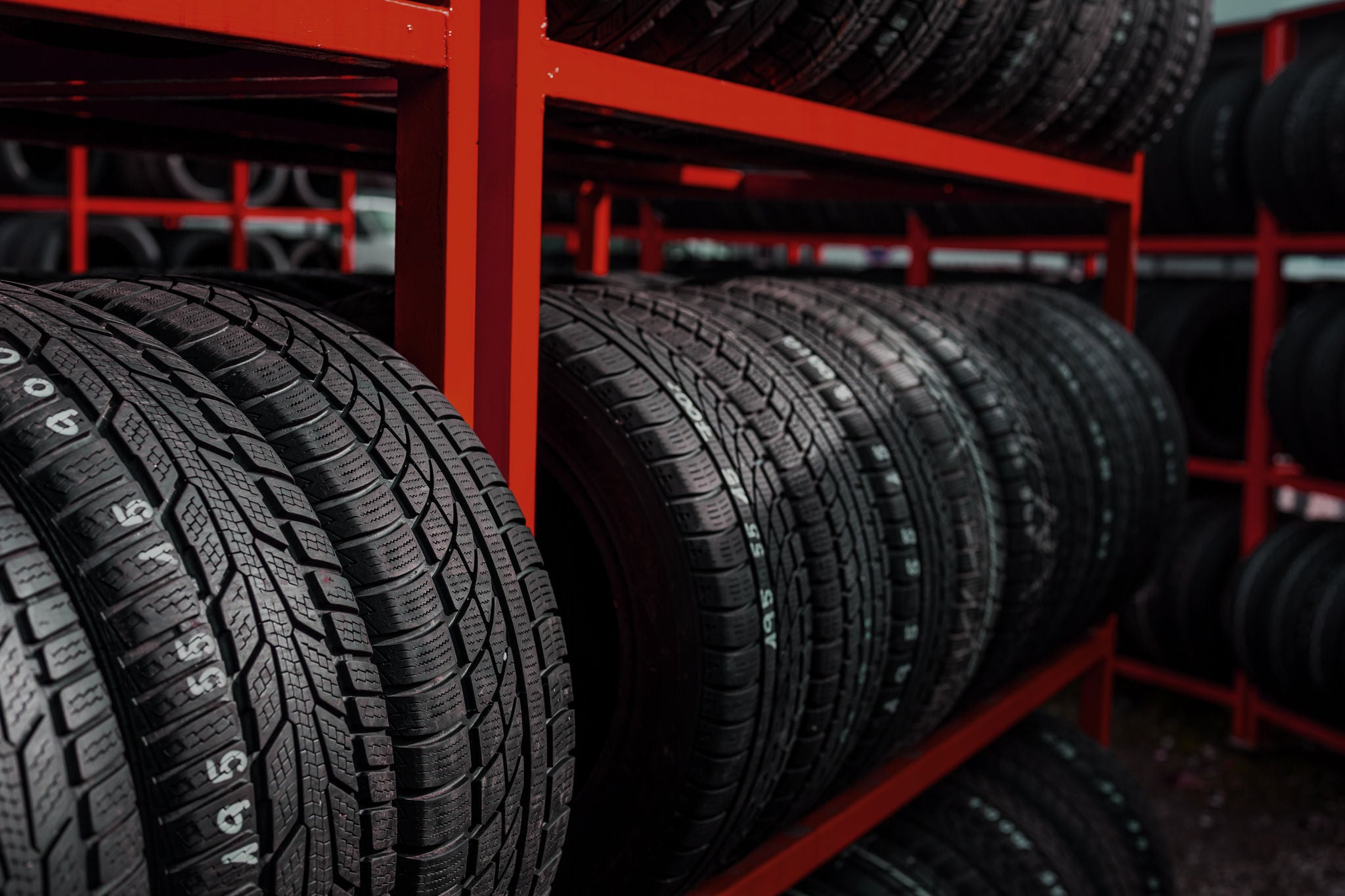
How to store tyres:
- Find out if there is a tyre hotel near you
- If not, find a cool, clean, dry environment to store them
- Clean your tyres with a mild detergent and allow to air dry
- Mark their original location on the tyre wall
- Wrap each tyre in an opaque black bag
- Store tyres with wheels horizontally
- Store tyres without wheels vertically
- Turn tyres regularly to prevent drying out
Storing tyres at home
It may too cost-prohibitive or simply too inconvenient to store them away from your home so, if you are going to try and do it yourself, the next question is how and where to store tyres so that they stay in peak condition?
The most important thing to avoid is cracking on the tyre wall. This happens when tyres are left unused for a long period of time. When tyres are in motion, anti-UV oxidisation chemicals keep the tyres flexible. However, when they’re static, these chemicals are not distributed evenly and dry patches appear.
You therefore need to minimise exposure to UV while your tyres are in storage. Once you’ve cleaned them – using a mild soapy detergent – and left them to air dry, use a tyre marker to mark their original location (left front, right rear etc.). Then wrap each tyre in an opaque black bag. You can buy tyre protection bags from motoring retailers or use black refuse bags. Try to extract as much air as possible before sealing them.
Store your tyres off the ground, ideally on a tyre rack, in a cool, dry, clean environment. Keep the tyres away from any heating or hot water supplies.
If your tyres are still connected to their wheels you can store your tyres horizontally on top of each other, sidewall to sidewall. If the tyres are being stored without tyres, align them vertically, with their sidewalls touching. Remember, to give the oxidisation chemicals the opportunity to reach the entire circumference of the tyre, you should rotate the tyres regularly, a bit at a time.
Even if you’ve stored your tyres carefully, they may still dry up through lack of use. Before refitting them to your car, look carefully for any cracks. If in doubt, ask your local Uniroyal dealer to check them over for you.
How to repair a tyre
We always recommend that tyres are repaired by professionals
Making a temporary repair
Of course, it’s possible that you’ll get a puncture far from home or too far from a tyre fitter to risk driving on a flat. If you have experience of repairing tyres and you’re in a well-lit, safe area, away from passing traffic, then go ahead.
It’s relatively straightforward to repair or replace your tyre temporarily – long enough for you to be able to get to some professional help.
Using tyre sealants
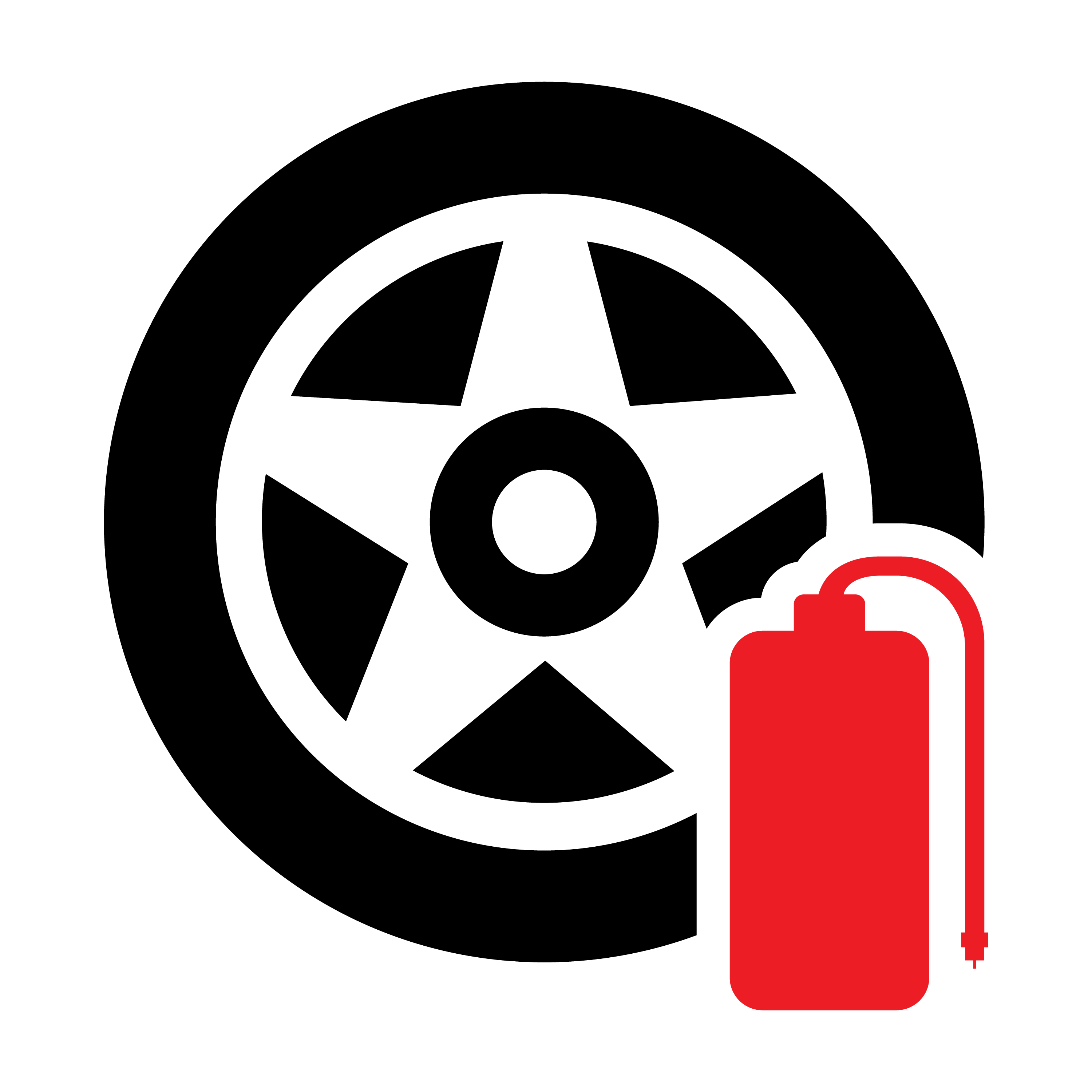
Your car’s manufacturer may have given you a tyre sealant and tyre inflator pack instead of a spare wheel. Assuming that your puncture isn’t too serious, and you haven’t driven on the flat tyre too long, you can inject the sealant into the tyre valve and either use the supplied pump or compressed air canisters to re-inflate the tyre. These kits can also be bought online or in motoring retailers either as pre-puncture prevention sealants or post-puncture repair sealants.
Tyre sealants offer a temporary solution and therefore should only be used to drive to the next garage. The tyre will need to be changed as soon as possible as the sealant can cause valves to stick together and therefore make the tyre unsuitable. Never drive faster than 60km/h after you’ve used a tyre sealant.
Not all punctures require a new tyre. Your local Uniroyal dealer will run through some mandatory checks before deciding if yours can be repaired. If you decide to repair your tyre yourself, this is what you need to know:
1. Only repair your tyre if the puncture is relatively minor.
2. Make sure you’re in a safe, well-lit area.
3. Insert tyre sealant into the tyre valve and re-inflate.
4. Remember, tyre sealant is only a temporary measure.
5. Drive slowly and carefully to your nearest tyre dealer.
Your local Uniroyal dealer will run through some mandatory checks such as looking at the area of the tyre that’s affected, the tread depth, the cause of the puncture etc. before deciding if they can repair a tyre. Did you know, for example, that if you get a puncture in the shoulder or side wall of the tyre, it is illegal for them to repair it?
They will also remove your tyre from the wheel to check for internal damage, something you wouldn’t be able to do by yourself.
Tread depth
How to check your tyres tread depth
It’s important that you know how to check your tyres’ tread depth. After all, the tread depth affects handling and provides grip with the road surface. The deeper it is, the more grip you’ll have.
 Tested by Continental Reifen Deutschland GmbH at the test location Contidrom (status: September 2020). Test conditions: 225/45 R 17, PremiumContact™ 6, wet road, from 80 km/h to 0 km/h, temperature 19,8 - 25,6° C. VW Golf 7 1.4 TSI. The graphics shown here are for illustration purposes only. The braking distance of a vehicle depends on its type, its age, the brakes and the tyres used, as well as the road surface. The full test report is available at www.continental-tires.com/car/tires/test-report-wet-braking-summer (Source: Continental Reifen Deutschland GmbH)
Tested by Continental Reifen Deutschland GmbH at the test location Contidrom (status: September 2020). Test conditions: 225/45 R 17, PremiumContact™ 6, wet road, from 80 km/h to 0 km/h, temperature 19,8 - 25,6° C. VW Golf 7 1.4 TSI. The graphics shown here are for illustration purposes only. The braking distance of a vehicle depends on its type, its age, the brakes and the tyres used, as well as the road surface. The full test report is available at www.continental-tires.com/car/tires/test-report-wet-braking-summer (Source: Continental Reifen Deutschland GmbH)
Optimal depths
A new car tyre begins life with approximately 8-9mm of tread depth. Legally, you can drive on them until they reach a minimum depth of the tread of 1.6 mm, across 75% of the tyre’s width and all around its circumference. However, consider that safe driving in wet and snowy weather conditions is affected by the tread depth, the pattern design and the rubber compound of the tread of your tyres. On wet or snow-covered roads braking performance will progressively decline with lower tread depths. On wet roads there is an additional increased risk of aquaplaning with fading tread depths.
Therefore, check your tyres regularly, reduce your speed on wet and snowy roads and consider replacing your tyres in good time.
Tread depth facts:
- New tyres have a tread depth of 8-9mm
- Legal minimum tread depth is 1.6mm
- Safe driving in wet and snowy weather conditions is affected by the tread depth, the pattern design and the rubber compound of the tread of your tyres.
- On wet and snow covered roads braking performance will progressively decline with lower tread depths
- Check your tyres regularly
- Reduce your speed on wet and snowy roads
- Consider replacing your tyres in good time
Checking your tyres’ tread depth
- First of all, check out the tread wear indicators that are built into the grooves of your tyres. These small horizontal bars are evenly spaced around the tyre’s circumference. Once your tyre has worn level with these bars, you have reached your minimum depth and your tyre will need replacing.
- Bear in mind though that these indicators tell you when you’ve reached 1.6mm and safe driving in wet and snowy weather might already be affected as mentioned above.
- A more accurate measurement can be taken using tyre gauges. These come in many different forms – from laminated cards with colour indicators to digital tyre depth gauges.
- Simply place the gauge into the tyre’s groove and you will see how close you are to reaching your minimum depth.
Related Topics
-
 2023/09/20Summer or winter tyresRead more
2023/09/20Summer or winter tyresRead more -
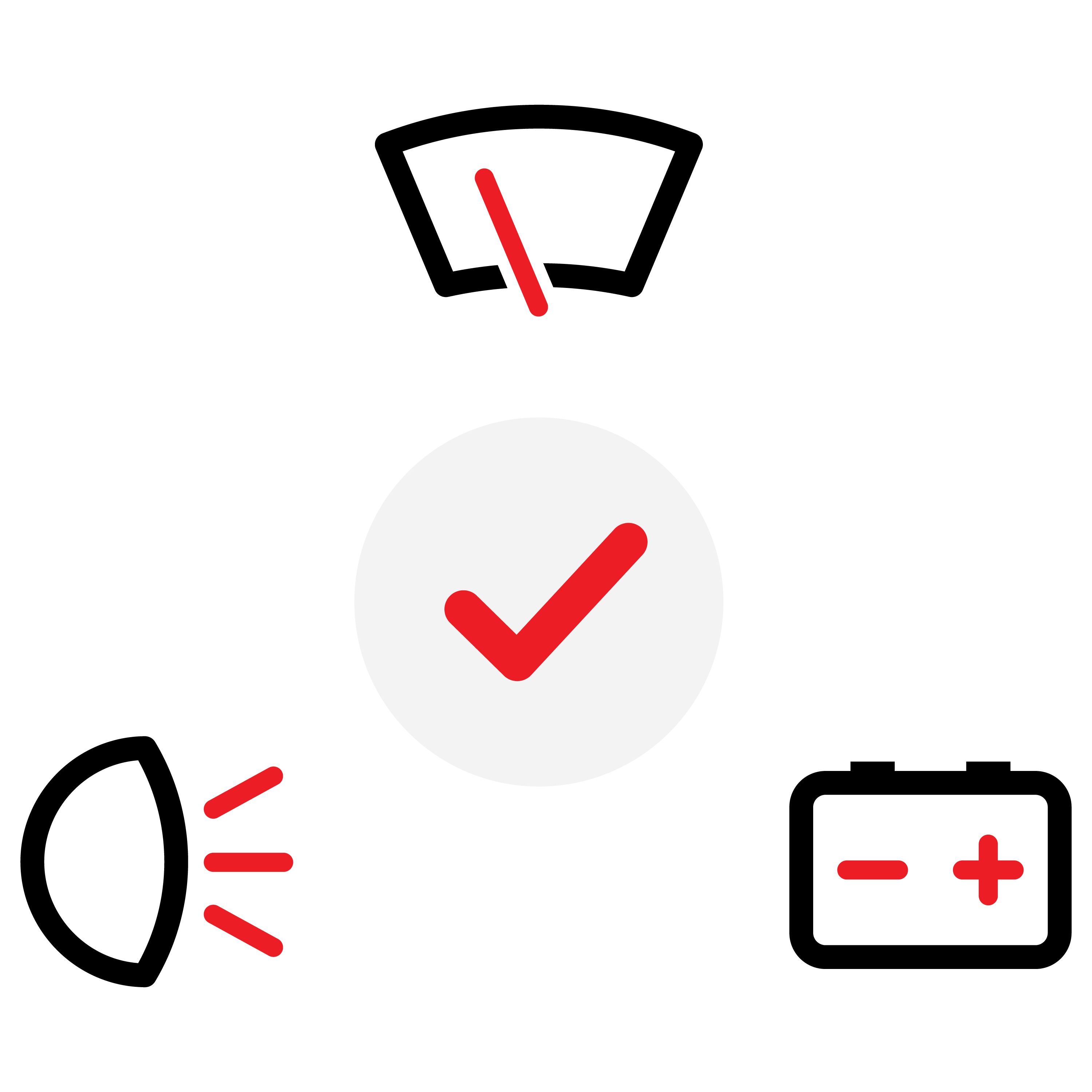 2023/09/20Safety & Driving TipsRead more
2023/09/20Safety & Driving TipsRead more -
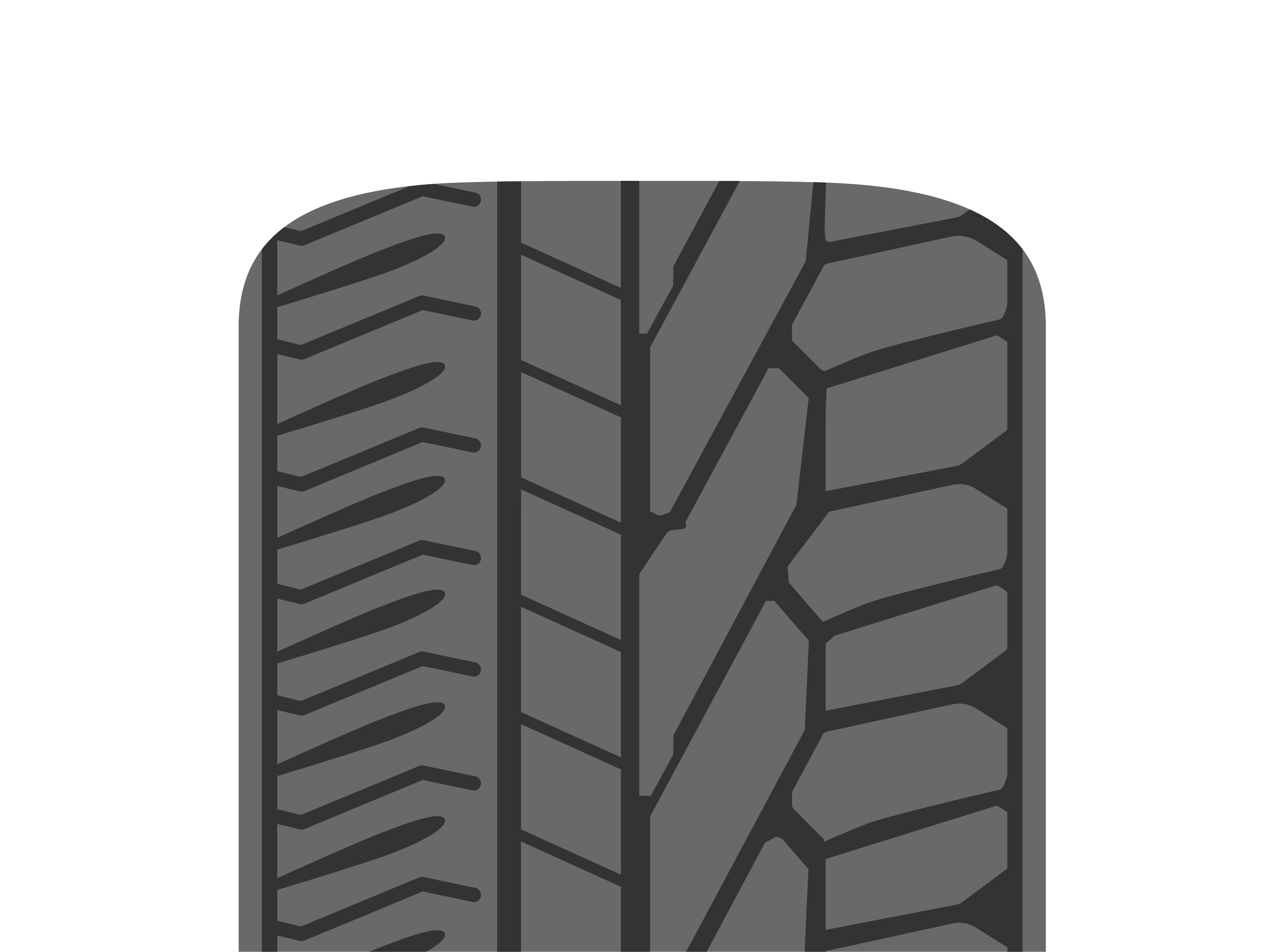 2023/09/20Tyre materialRead more
2023/09/20Tyre materialRead more